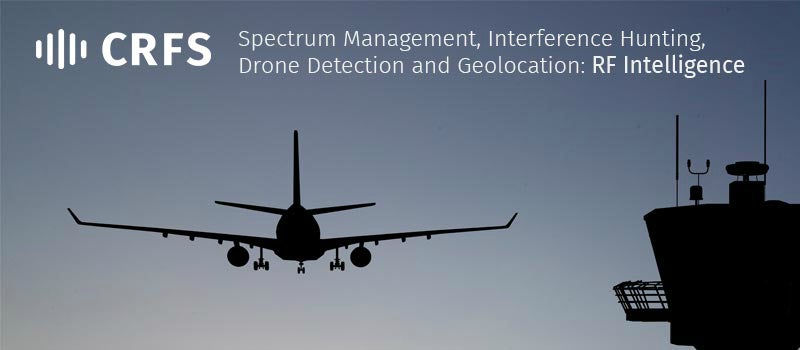
CRFS produces industry-leading systems for radio frequency (RF) spectrum management and signal geolocation.
Along with our intelligent receiver technology, our advanced software and analytics platforms detect, identify and geolocate signals of interest in complicated RF environments.
RF hardware and software for airport drone detection
CRFS offers a full suite of receiver options, with Nodes covering ranges from 9kHz to 18GHz. The RFEye system Nodes are high-performing, compact, rugged and modular, making it suitable for the civilian, defence and homeland security sectors
Optimal noise figure values mean that even low power signals can be detected, analysed and located. CRFS arrays incorporate Nodes along with spiral antenna modules.
Complementing the RFEye hardware range, CRFS software offers the ability to perform real-time geolocation, signal classification, post-analysis of recorded data, signal propagation modelling and scenario simulation. Packages are available for non-technical (RFEye Mission), technical (RFEye Site) and expert (DeepView) users.
UAS detection hardware for airports
With drone incursions into commercial airspace currently increasing in both frequency and disruptiveness, drone detection solutions are becoming a key piece of equipment for airports, and CRFS Nodes can form an integral part of those solutions.
Using a network of Nodes set up around the airport, the RF signals used to control and operate drones can be geolocated using 3D time difference of arrival (TDOA), which pinpoints the locations of the drone and its operator.
Location programmes for ADS-B spoofing
Automatic dependent surveillance-broadcast (ADS-B) requires aircraft to broadcast their location as determined by GPS. It is a key part of the US’ Next Generation Air Transportation System, ‘Single European Sky’ research and rest of the world (RoW) plans for the future of air traffic monitoring and control.
Spoof signals can be generated as ADS-B transmissions are unauthenticated. By creating a signal that matches the required messaging protocol, details of non-existent ‘ghost’ aircraft can be sent to either air traffic control (ATC) ground stations or other aircraft. This could cause major disruption if flights need to be diverted to avoid ghost aircraft.
CRFS systems offer a means to mitigate the harm caused by ADS-B spoofing. By analysing the signal time of arrival at different Nodes, we can determine whether the signal originates from its specified location. If there is a disparity between the two location determination methods, air traffic controllers can be alerted, and investigation of the signal source can be carried out.
Software for combating radar and communications jamming
Accidental interference and deliberate jamming of RF signals can also present problems for airport operations. GPS jammers used by truck and taxi drivers to disable tracking on their vehicles have caused aircraft to lose GPS signals on approach to airports.
CRFS systems can provide a solution because signals that are strong enough to interfere with operations can be easily geolocated.
About CRFS
In addition to providing hardware and software, CRFS can work with clients to determine, build and deploy the system that meets specific needs.
If you have particular project requirements that you would like to discuss, or would like further details on any CRFS products, then please use the enquiry form to get in touch with us.




